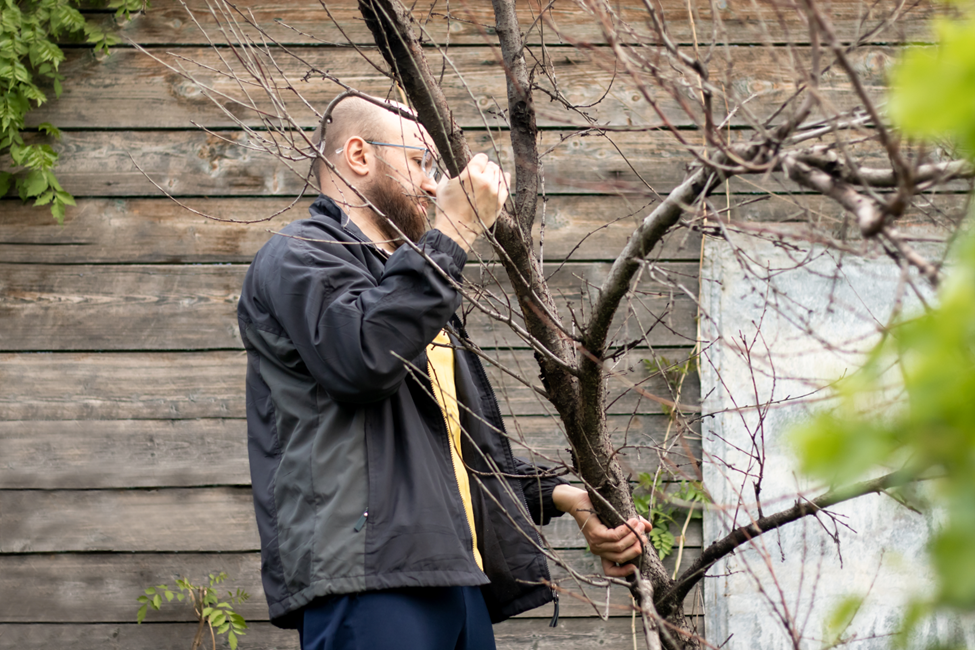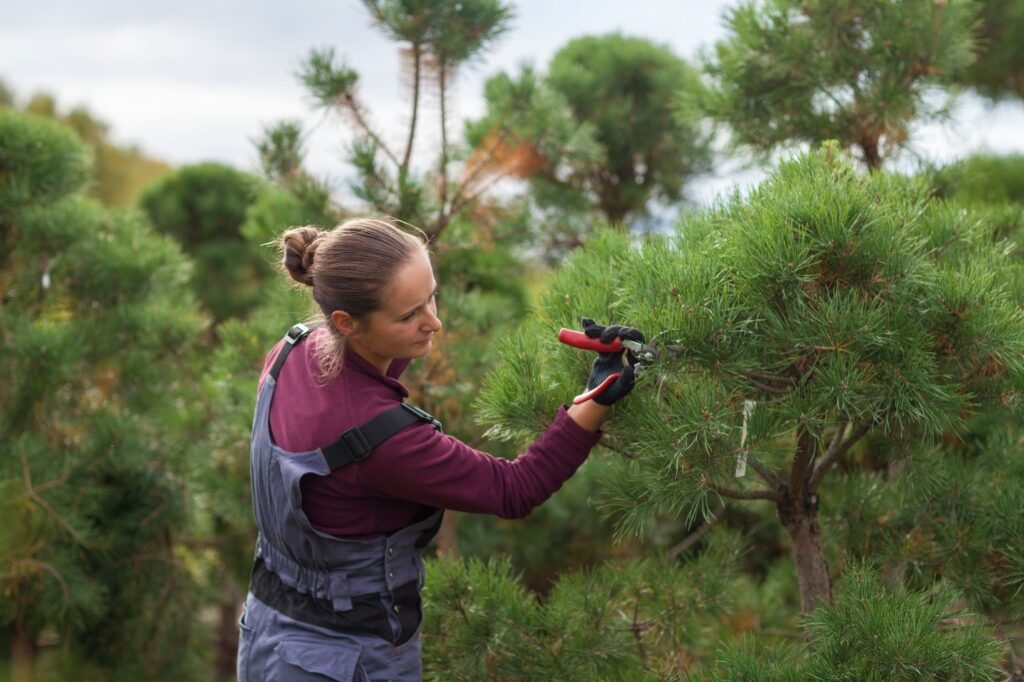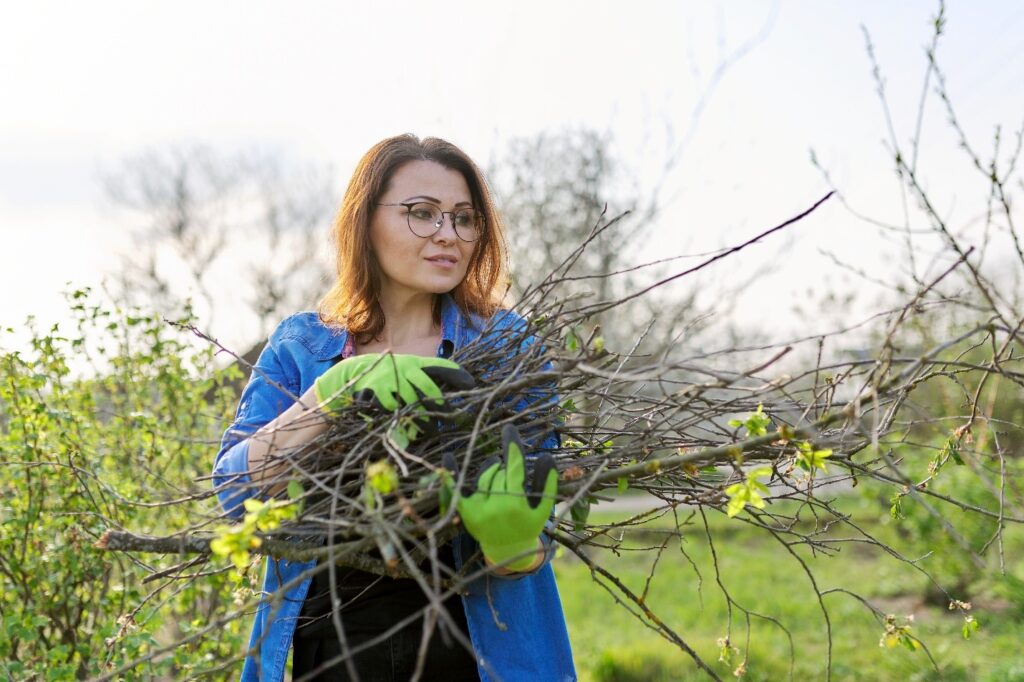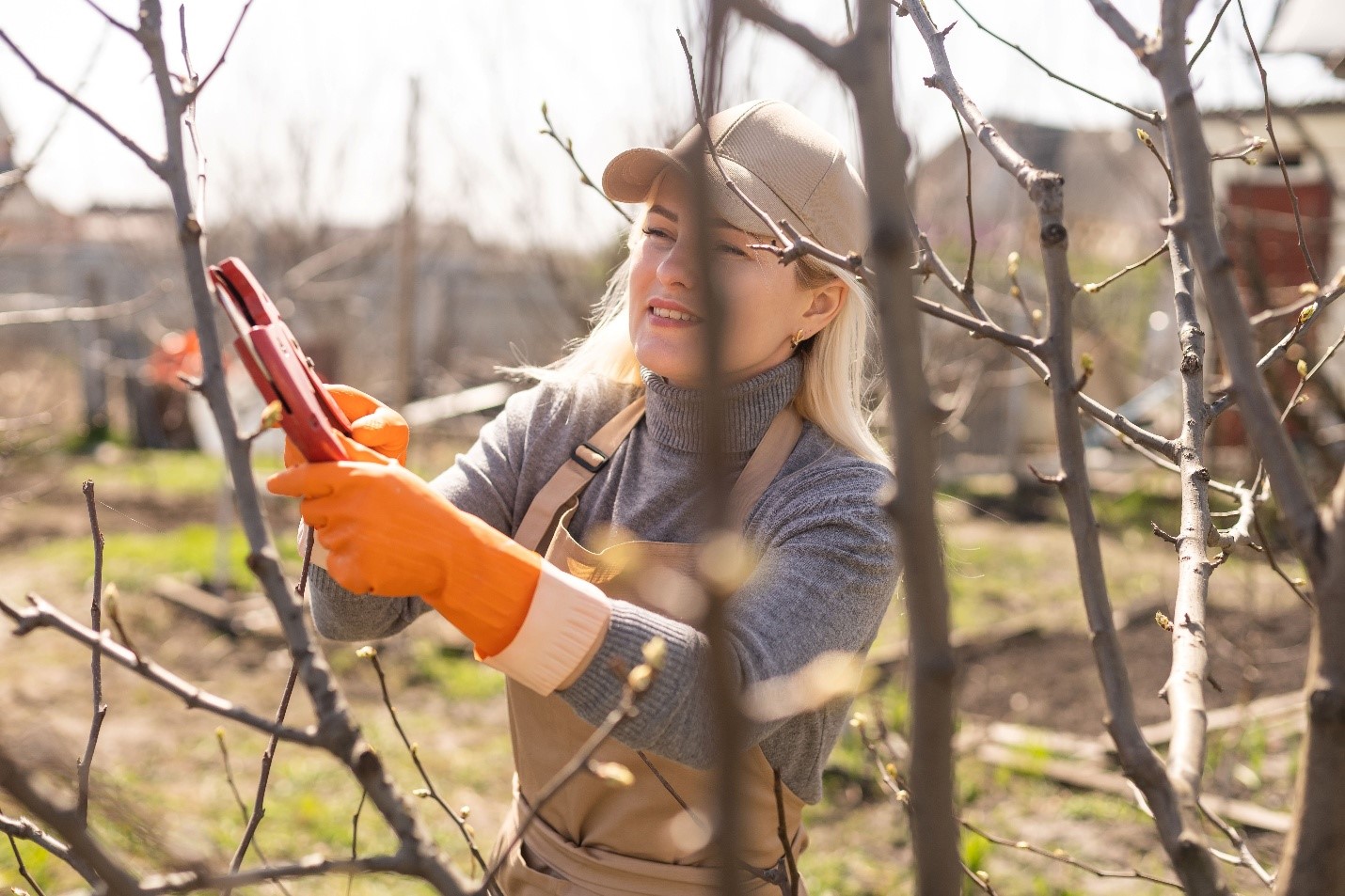Many trees and large shrubs require occasional pruning, and late winter in SoCal before early spring’s active growth is often a good time. When done for the right reasons, winter pruning creates healthy, vigorous plants.
Trees and shrubs should only be pruned if you have a good reason for doing so. Keep in mind that not all trees and shrubs require pruning, and inappropriate pruning can misshape and unbalance plants and even open them up to pests and diseases.
It is also important to use the correct type of pruners for the job. For most trees and large shrubs, you will want to use tree pruners.

To Determine If and How You Should Prune Your Trees and Shrubs in Winter, Keep the Following Guidelines in Mind






 Guidelines for Pruning:
Guidelines for Pruning:







🌿 When to Winter Prune Landscape Trees
🌲 Conifers
Prune conifers and certain other trees in November, December, January, or February.
📌 Such trees include:
✅ Cedars
✅ Cypress
✅ Pines
✅ Redwoods
✅ Eucalyptus
🍂 Deciduous Trees
Prune most deciduous trees during their dormant period after leaves have fallen, which is usually November, December, January, or February.
📌 Such trees include:
✅ Ash (Fraxinus species)
✅ Birch (Betula species)
✅ Cape chestnut (Calodendrum capense)
✅ Chinese elm (Ulmus parvifolia)
✅ Chinese pistache (Pistacia chinensis)
✅ Fruitless mulberry (Morus alba)
✅ Ginkgo (Ginkgo biloba)
✅ Italian alder (Alnus cordata)
✅ Maple
✅ Sweet gum (Liquidambar styraciflua)
✅ Sycamore

🌸 Flowering Trees
Prune flowering trees when they are dormant, if they are deciduous, or immediately after flowering is completed, if they are evergreen.
For those trees that bloom when they are leafless, wait until after they finish flowering.
Flowering trees include:
- Acacias (various species)
- Bradford pear (Pyrus calleryana, several cultivars) – blooms while leafless
- Camellia Japonica
- Cape chestnut (Calodendrum capense)
- Cassia
- Chinese flame tree (Koelreuteria bipinnata)
- Coral trees (Erythrina caffra and other species) – bloom while leafless
- Crape myrtle
- Empress tree (Paulownia tomentosa) – blooms while leafless
- Firewheel trees (Stenocarpus sinuatus)
- Jacaranda
- Lemon bottlebrush (Callistemon citrinus)
- New Zealand Christmas tree
- Purple orchid tree (Bauhinia variegata)
- Saucer magnolia (Magnolia soulangiana) – blooms while leafless
- Silk tree/mimosa (Albizia julibrissin)
- Southern magnolia (Magnolia grandiflora)
- Tipu tree (Tipuana tipu)
🌿 Broadleaf Evergreens
Prune broadleaf evergreens from October through March or May or June.
Such trees include:
- Bronze loquat (Eriobotrya deflexa)
- Camphor tree (Cinnamomum camphora)
- Carrot wood (Cupaniopsis anacardioides)
- Eucalyptus species
- Kaffir plum (Harpephyllum caffrum)
- Oaks, including coast live oak (Quercus agrifolia) and holly oak (Quercus ilex)
- Olive (Olea europaea)
- Ornamental figs (Ficus species)
- Peppermint tree (Agonis flexuosa)
- Pittosporum species, such as Victorian box (Pittosporum undulatum)
- Toyon (Heteromeles arbutifolia)
📌 Note: Fruit trees require different pruning techniques than landscape trees. Each type has its own special requirements. Pruning a fruit tree incorrectly or at the wrong time can negatively affect fruit production.
📖 For detailed information on growing and pruning more than 40 fruit trees in Southern California, check out my book Southern California Fruit Gardening.
 Frequently Asked Questions: Winter Pruning in Southern California
Frequently Asked Questions: Winter Pruning in Southern California
 When is the best time to winter prune trees in Southern California?
When is the best time to winter prune trees in Southern California?
The ideal time to winter prune trees in Southern California is during the late winter months—typically November through February—before early spring growth begins. This is when most trees are dormant, reducing stress and promoting healthy regrowth.
 Which trees should be pruned in winter?
Which trees should be pruned in winter?
Winter pruning is best for deciduous trees (like ash, birch, and sycamore), conifers (like pines and redwoods), and many broadleaf evergreens (like eucalyptus and olive). Flowering trees should be pruned while dormant or just after blooming, depending on the species.
 How much can I prune a tree or shrub at once?
How much can I prune a tree or shrub at once?
Never remove more than one-third of a tree or shrub’s growth at a single pruning session. Over-pruning can stress the plant and weaken its structure.
 Why should I prune in winter?
Why should I prune in winter?
Winter pruning:
- Removes dead, diseased, or rubbing branches
- Improves airflow and light penetration
- Encourages strong growth in spring
- Helps shape young trees
- Prevents potential hazards
 How do I properly prune large branches?
How do I properly prune large branches?
Use the three-cut method to safely remove large limbs:
- First cut: Saw halfway through the branch from the bottom about a foot out from the trunk.
- Second cut: Cut from the top to meet the first cut and remove the limb.
- Final cut: Make a clean cut just outside the branch collar to help the tree heal naturally.
 When should I prune flowering trees?
When should I prune flowering trees?
- For deciduous flowering trees, prune after they bloom, especially if they flower while leafless.
- For evergreen flowering trees, prune right after blooming to avoid cutting off next year’s flowers.
 Can I prune fruit trees the same way as landscape trees?
Can I prune fruit trees the same way as landscape trees?
No. Fruit trees require specific pruning techniques and timing to ensure healthy fruit production. Consult a fruit tree pruning guide for best results.
 Where can I learn more about pruning fruit trees in Southern California?
Where can I learn more about pruning fruit trees in Southern California?
Check out the book Southern California Fruit Gardening by Julie Bawden-Davis, which offers detailed advice on pruning and growing more than 40 fruit tree varieties in SoCal.


 Guidelines for Pruning:
Guidelines for Pruning:
 When is the best time to winter prune trees in Southern California?
When is the best time to winter prune trees in Southern California? Which trees should be pruned in winter?
Which trees should be pruned in winter? How much can I prune a tree or shrub at once?
How much can I prune a tree or shrub at once? Why should I prune in winter?
Why should I prune in winter? How do I properly prune large branches?
How do I properly prune large branches? When should I prune flowering trees?
When should I prune flowering trees? Can I prune fruit trees the same way as landscape trees?
Can I prune fruit trees the same way as landscape trees? Where can I learn more about pruning fruit trees in Southern California?
Where can I learn more about pruning fruit trees in Southern California?